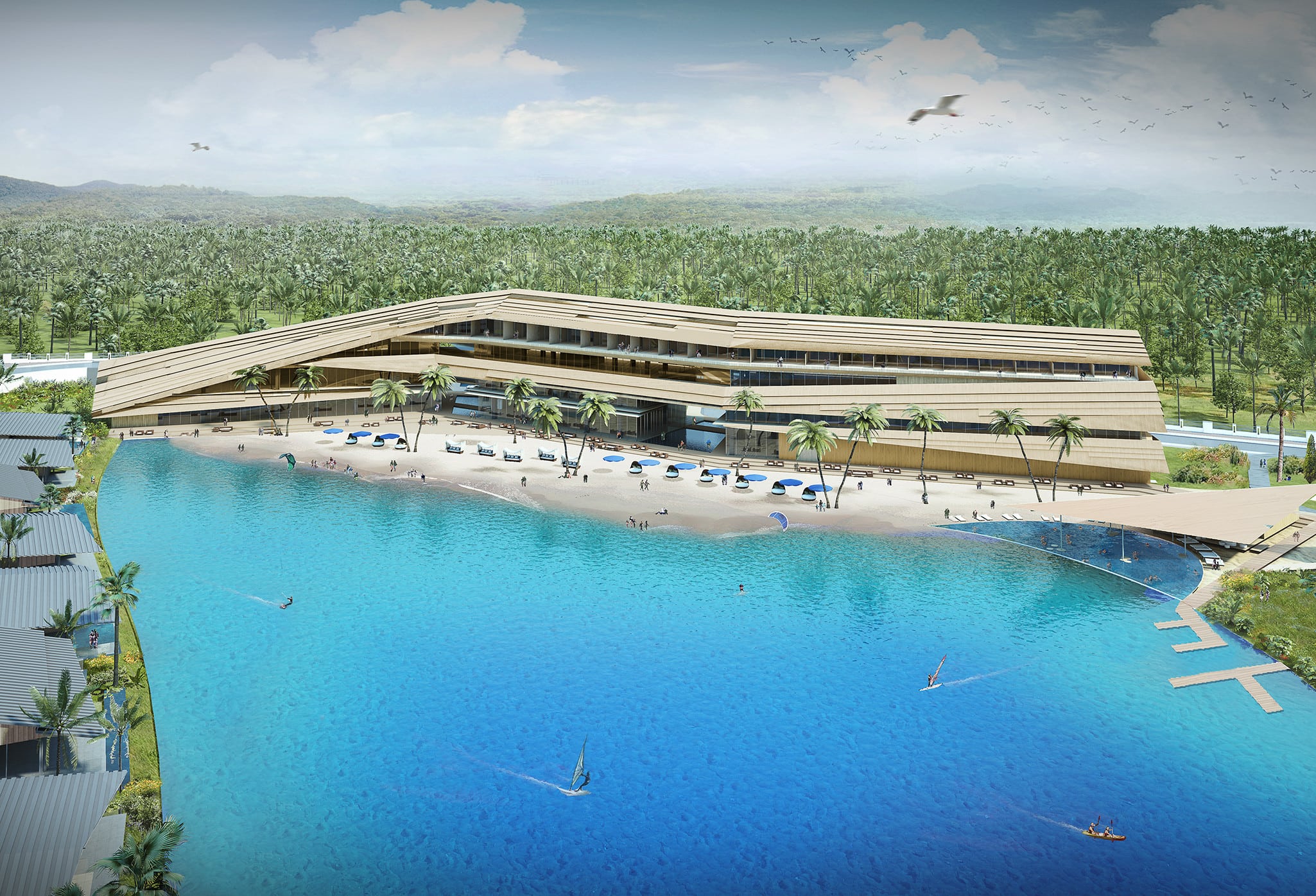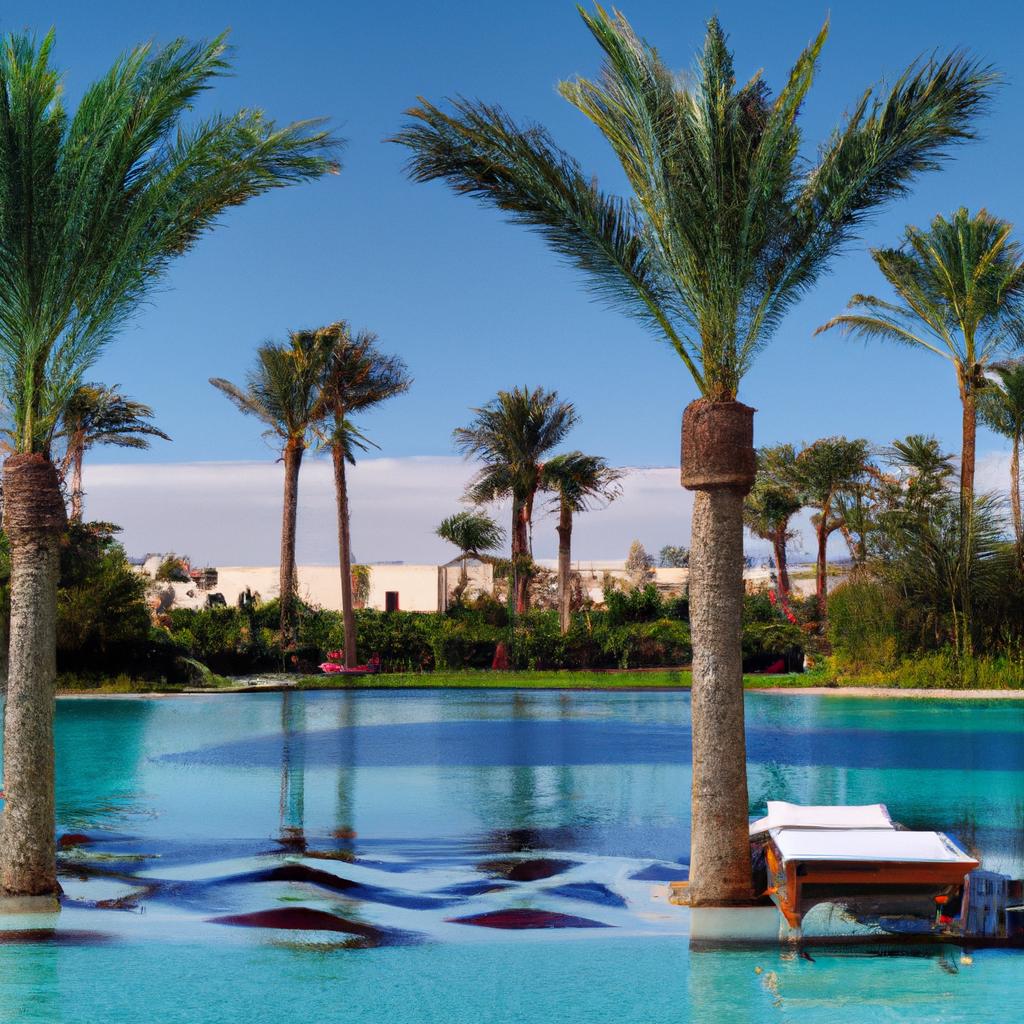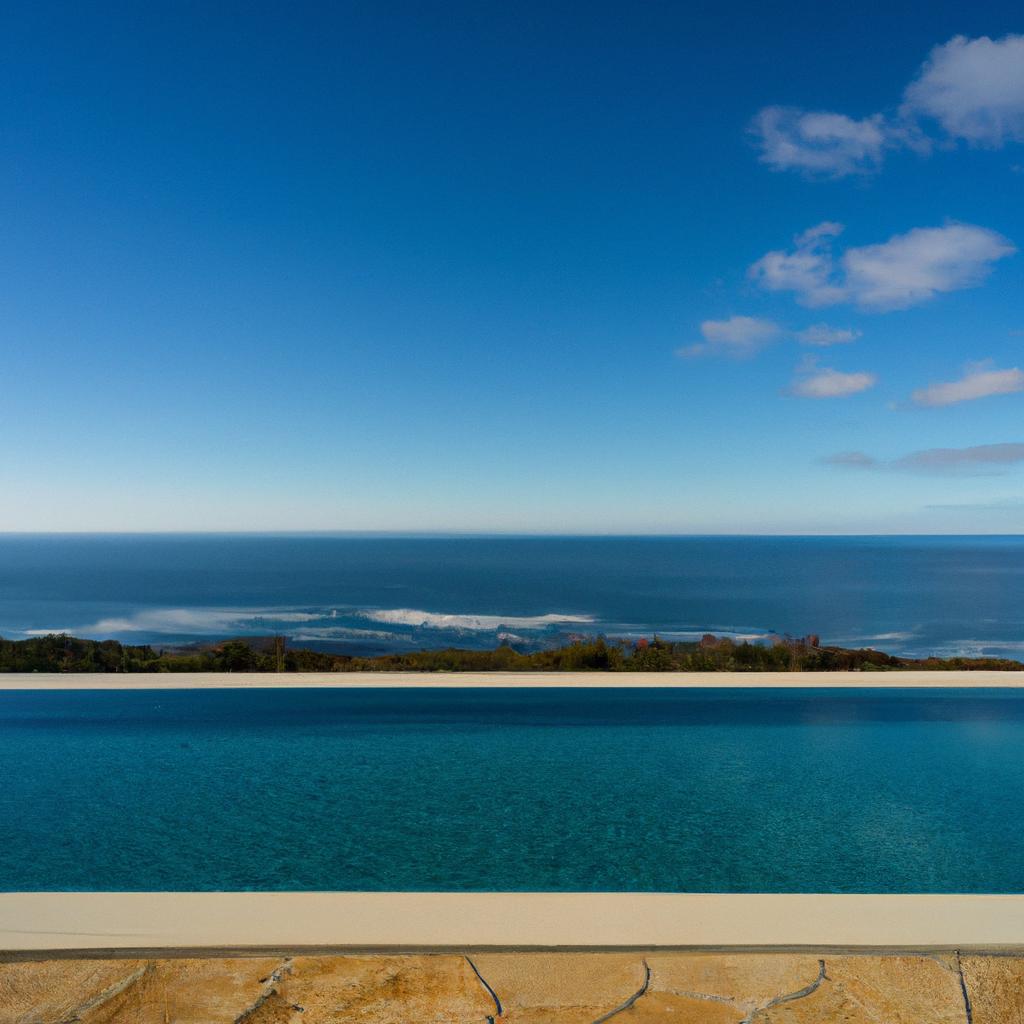Largest Swimming Pools In The World - Measuring Grandeur
Have you ever stopped to think about just how vast some swimming pools can be? It's kind of amazing, actually. We often picture a backyard pool, maybe a community center one, but some pools out there are so big they almost feel like small lakes. These aren't just places to cool off; they are often major attractions, drawing people from all over to experience their sheer size. It makes you wonder, too, what makes something the "largest" when we talk about these incredible bodies of water.
You see, when we talk about the "largest swimming pools in the world," it gets a little interesting. Is the largest one the one with the most surface area, like a really wide, flat expanse of water? Or could it be the one that holds the most water, perhaps a bit deeper, even if it doesn't spread out as much? This idea, you know, about what "largest" truly means, is something we think about a lot when comparing things. It’s a bit like asking if a really tall building is "bigger" than a building that covers an entire city block, even if it's not as high.
So, as a matter of fact, for these immense pools, the common way to think about "largest" usually points to the one that takes up the most ground space, the one with the greatest surface area. That means you could potentially swim for ages in one direction without hitting an edge. But, it's worth keeping in mind that another pool, which might seem smaller on the surface, could actually hold a truly incredible amount of water if it goes down really deep. It just depends on what you are trying to measure.
- Chrissy Teigen Grammys 2025
- Jcpenney Fairview
- Kristi Yamaguchi Husband
- Elizabeth Olsen Sexy
- Liv Morgan Alexa Bliss
Table of Contents
- What Makes a Pool Truly Big?
- How Do We Measure the Largest Swimming Pools in the World?
- Are These Largest Swimming Pools in the World Just for Looks?
- Can a Pool Be the Largest Swimming Pool in the World but Not the Deepest?
- Examples of the Largest Swimming Pools in the World
- The Sheer Scale of the Largest Swimming Pools in the World
- Maintaining the Largest Swimming Pools in the World
- The Future of the Largest Swimming Pools in the World
What Makes a Pool Truly Big?
When we talk about the truly significant pools, the ones that stand out as the largest swimming pools in the world, we are often thinking about their sheer length and width. It's like comparing, say, a small pond to a wide, open lake. The surface area is a key factor here, giving you a sense of how much room there is to spread out. Some of these pools are so expansive, you could pretty much fit several football fields inside them, or perhaps even a small neighborhood. That's a lot of watery space, you know.
A pool's overall size isn't just about how long or wide it is, though. The amount of water it holds also plays a part in its perceived grandeur. A pool that's really shallow but covers a lot of ground might be "largest" by surface area, but one that's incredibly deep, even if it's not as spread out, could be considered "biggest" because of its immense volume of water. It's a bit like how a very tall, thin tower might be the "highest" building, but a sprawling factory complex might be the "biggest" in terms of total enclosed space. This distinction, in some respects, comes up quite often when we try to define what "biggest" or "largest" really means.
The purpose of these very large pools also shapes their design. Many of the largest swimming pools in the world are found at resorts, especially those in sunny places. They are built for leisure, for people to relax, swim laps, or just float around. Others might be part of massive water parks, offering different zones for various activities. So, the design often aims for a feeling of openness and space, allowing for many people to enjoy the water without feeling cramped. It’s a pretty interesting balance to strike.
- Did Spencer Get Drafted On All American
- Cordless Vacuum Black Friday
- May 1 Astrology
- Kitty Menendez Young Photos
- Romano Giancarlo
How Do We Measure the Largest Swimming Pools in the World?
Measuring something like the largest swimming pools in the world typically comes down to a few key things. Most often, people look at the surface area. This means how much ground the water covers, measured in square meters or square feet. Think of it like mapping out a big piece of land; you're looking at its footprint. This is a fairly straightforward way to compare pools, as it gives a clear visual of how much space it takes up. It's how we generally decide what's "largest" in terms of physical dimensions.
However, as we discussed, there is another way to think about "biggest," which considers the total volume of water. This involves not just the length and width, but also the depth. A pool could have a smaller surface area than another, but if it's much, much deeper, it could hold more water overall, making it "bigger" in terms of liquid content. For instance, you know, if you had a very wide, shallow dish and a tall, narrow glass, the dish might cover more table space (larger surface area), but the glass could hold more liquid (bigger volume). It's a useful distinction to keep in mind, especially for these very substantial water features.
When we try to list the very largest swimming pools in the world, the numbers can be quite staggering. We're talking about areas that stretch for hundreds of meters, sometimes nearly a kilometer. To put that in perspective, a standard Olympic-sized swimming pool is about 50 meters long. Some of these truly immense pools are many, many times that length. This kind of scale requires a lot of engineering and a good deal of planning to make sure everything works just right. It's a bit of an engineering marvel, really.
Are These Largest Swimming Pools in the World Just for Looks?
You might wonder if these truly colossal pools, the ones that are considered the largest swimming pools in the world, are just there to be admired from afar. But, as a matter of fact, that's usually not the case at all. While their size certainly makes them impressive to look at, they are absolutely designed for people to use and enjoy. Many of them are central features of resorts, where guests spend a good deal of their time splashing around, swimming, or simply relaxing by the water's edge.
These huge pools often have different sections for various activities. You might find a shallow area for children to play, a deeper part for swimming laps, and perhaps even some sections where you can try out water sports, like kayaking or paddleboarding. Some even have artificial beaches built right into their edges, making them feel even more like a natural body of water. So, they are very much functional spaces, meant to provide a wide range of water-based fun for many, many people at once. It's pretty cool, actually, how they manage to combine beauty with practicality.
The sheer number of people these pools can accommodate is also a factor in their purpose. Think about a busy resort during peak season; you need a lot of space for everyone to feel comfortable. A really big pool helps to spread people out, making the experience more pleasant for everyone. So, while they are certainly a sight to behold, their primary role is often to serve as a massive aquatic playground for visitors. They are, in a way, a major draw for tourists seeking a memorable water experience.
Can a Pool Be the Largest Swimming Pool in the World but Not the Deepest?
Yes, absolutely, a pool can definitely be considered among the largest swimming pools in the world without necessarily being the deepest. This goes back to our earlier point about how we define "largest" versus "biggest." If we are talking about surface area, a pool can spread out for a really long way, covering a vast amount of ground, but still be quite shallow. Think of a very wide, shallow lagoon, for example. It takes up a lot of space, but you might be able to stand up in most of it.
On the other hand, a pool designed for, say, scuba diving training might be much, much deeper than a resort pool, but it would likely have a much smaller surface area. That kind of pool would hold a truly significant amount of water due to its depth, making it "bigger" in terms of volume, but it wouldn't be "largest" if you were measuring how much ground it covers. So, you know, the way we use these words really matters depending on what characteristic we are focusing on.
Most of the record-breaking largest swimming pools in the world are built for recreation, and for that purpose, extreme depth isn't usually necessary across their entire expanse. They might have deeper sections for swimming, but the overall design often prioritizes a vast, accessible area. This means they can be truly enormous in terms of how much space they occupy, without needing to plunge down to incredible depths everywhere. It's a very practical approach to creating a massive water feature for many people to enjoy.
Examples of the Largest Swimming Pools in the World
When we talk about the truly record-setting pools, the ones that are consistently mentioned as the largest swimming pools in the world, a few names usually come up. These are often found in places known for their grand resorts and sunny climates. These places have invested a good deal in creating water features that are not just pools, but actual attractions in themselves. They are often central to the entire experience of staying at these destinations.
One of the most well-known examples, for instance, is a pool that stretches for nearly a kilometer along a coastline. It is so long that people often use small boats or kayaks to get from one end to the other. This particular pool holds an absolutely incredible amount of water, roughly equivalent to many, many Olympic-sized pools combined. It is a really good example of a pool that prioritizes surface area, giving visitors a sense of endless blue water right at their fingertips.
Another remarkable example can be found in a different part of the world, also at a major resort. This pool is also incredibly long, but it also has a kind of winding, lagoon-like shape, making it feel more like a natural body of water than a constructed pool. Its sheer size allows for different zones, some quieter, some more active, catering to all sorts of preferences. These pools are, in a way, like small aquatic cities, offering so much space and so many options for water enjoyment.
The Sheer Scale of the Largest Swimming Pools in the World
To really get a sense of the sheer scale of the largest swimming pools in the world, it helps to put their dimensions into perspective. Imagine a standard city block; some of these pools cover an area comparable to that, or even more. We are talking about lengths that can exceed 1,000 meters, which is pretty much the length of ten football fields lined up end to end. This kind of size means you could literally spend hours just swimming laps without ever feeling like you are going in circles.
The volume of water these pools hold is also quite astounding. While some might be relatively shallow across their vast surface, the total amount of water needed to fill them is immense. This requires a very sophisticated system for filtration and treatment to keep the water clean and safe for everyone. It's not just about digging a big hole and filling it up; it's a very complex operation to manage such a large body of treated water. So, the engineering behind them is pretty impressive.
The visual impact of these pools is also a big part of their appeal. From above, they often look like giant, sparkling blue mirrors, reflecting the sky and surrounding landscape. When you are standing beside one, the horizon seems to stretch out across the water, giving you a feeling of being by a natural lake or ocean. This visual grandeur is, you know, a key element in why these pools are so captivating and draw so much attention from people around the globe.
Maintaining the Largest Swimming Pools in the World
Keeping the largest swimming pools in the world in top condition is a truly massive undertaking. It's not just a matter of tossing in a few chlorine tablets. These pools require very advanced filtration systems, often with multiple pumps and filters working constantly to circulate and clean the enormous volume of water. Think about how much effort goes into a regular pool; now multiply that by hundreds or even thousands of times. It's a lot of work, honestly.
Water quality control is also a continuous process. Teams of people are typically responsible for regularly checking the chemical balance of the water, making sure it's safe and comfortable for swimmers. This involves precise measurements and adjustments to maintain the right levels of sanitizers and pH. Because of their size, even small imbalances can become much larger problems if not addressed quickly. So, there is a very dedicated approach to keeping the water just right.
Beyond the water itself, the physical structure of these pools also needs constant attention. This includes routine cleaning of the pool surfaces, checking for any cracks or leaks, and maintaining the surrounding areas like decks and artificial beaches. It’s a bit like taking care of a very large park or a small body of water; every part of it needs regular care to stay in good shape. So, the sheer scale of these pools means a whole team is usually involved in their upkeep.
The Future of the Largest Swimming Pools in the World
Looking ahead, it's interesting to think about what the future holds for the largest swimming pools in the world. Will they get even bigger? It seems like there's always a desire to push the boundaries of what's possible in terms of scale and design. We might see even more integration with natural landscapes, blurring the lines between a constructed pool and a natural lagoon. The technology for water treatment and maintenance also continues to get better, making it more feasible to manage these immense water bodies.
There's also a growing interest in sustainability. Future designs for the largest swimming pools in the world might focus more on reducing their environmental footprint. This could mean using more efficient filtration systems, exploring alternative water sources, or finding ways to heat the water using renewable energy. So, while size will probably always be a draw, how these pools are built and operated might change quite a bit to be more friendly to the planet. It's a pretty important consideration, you know, for such large constructions.
Ultimately, these grand pools represent a blend of human ingenuity and a desire for leisure on a grand scale. They offer a unique experience, a place where you can feel both immersed in water and surrounded by vast open space. As long as people seek out truly memorable vacation experiences, there will likely be a drive to create even more impressive and expansive water features around the globe. It's a fascinating area to watch, really, as these structures continue to evolve.
- Tracy Letts Playwright
- Winnie The Poodle
- Kim Kardashian Lamborghini
- Peter Doocy Is Gay
- Ill Stand By You Carrie Underwood

7 Largest Swimming Pools in the World - Largest.org

The Largest Swimming Pools in the World: A Comprehensive Guide - TooLacks

The Largest Swimming Pools in the World: A Comprehensive Guide - TooLacks